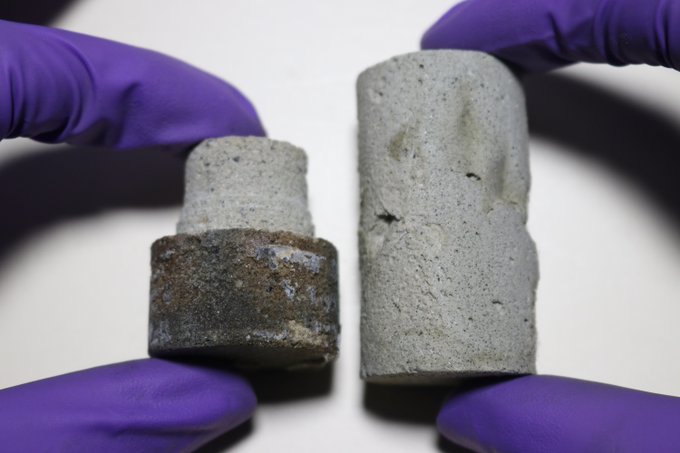Indian scientists have devised a method for building brick-like structures on the moon that is both sustainable and cost-effective. The method takes lunar soil and consolidates it into load-bearing structures using bacteria and guar beans. Researchers believe that in the future, these “space bricks” will be used to build habitation structures. The Indian Institute of Science, Bangalore (IISc) has created a material that can be produced into any freeform shape using only a simple lathe. Without the need for additional attaching systems, this might be used to create sophisticated interlocking structures for construction on the moon.
Key Highlights
- Indian scientists have devised a method for building brick-like structures on the moon that is both sustainable and cost-effective.
- The method takes lunar soil and consolidates it into load-bearing structures using bacteria and guar beans.
- Researchers believe that in the future, these “space bricks” will be used to build habitation structures.
- The Indian Institute of Science, Bangalore has created a material that can be produced into any freeform shape using only a simple lathe.
- Without the need for additional attaching systems, this might be used for sophisticated interlocking structures.
Bengaluru: The Indian Institute of Science (IISc, Bengaluru) and the Indian Space Research Organisation (ISRO) have discovered a sustainable mechanism for building brick-like structures on the moon, according to a tweet.
It takes advantage of lunar soil and employs bacteria and guar beans to help consolidate it into load-bearing structures. These “space bricks,” according to the researchers, might be used to build structures for settlement on the moon’s surface in the future.
“It is basically fascinating because it puts two separate domains like biology and engineering together,” Aloke Kumar, Asst. Prof. in the Department of Engineering at IISc, stated.
Sporosarcina pasteurii, for example, uses the ureolytic cycle to make carbonate crystals. These crystals are produced as a byproduct of the pathway using urea and calcium.
“Since the Cambrian Period, living species have been involved in mineral precipitation, and modern science has discovered a use for them,” Kumar added.
They combined the bacteria with a lunar soil simulant before adding the urea and calcium supplies, as well as gum produced from locally obtained guar beans. Gum was added to increase the fabric’s strength by acting as a scaffold for carbonate precipitation. After a few days of incubation, the final product was discovered to have significant strength and machinability.
Asst. Prof. Koushik Viswanathan of IISc’s Department of Engineering states, “A basic lathe may be used to mold our material into any freeform shape. This is helpful since it eliminates the need for specialized molds, which is a common challenge when trying to cast a variety of shapes. This capability might even be used to build complex interlocking structures on the moon without the need for additional anchoring methods.”
Rashmi Dikshit, an IISc DBT-BioCARe Fellow, also looked into using other locally accessible soil bacteria instead of S. pasteurii. Bacillus velezensis was discovered to be an appropriate candidate with similar traits after the researchers tested different soil samples in Bangalore.
A vial of S. pasteurii can cost Rs. 50,000, but B. velezensis is around 10 times less, according to the researchers.
“Before we consider extraterrestrial colonies, we have a long way to go. Our next step will be to produce larger bricks using a more automated and parallel production method, and we may also want to improve the strength of those bricks by testing them under a variety of loading circumstances, such as impacts and possibly moonquakes “Kumar explains.
IISc & @isro scientists have developed a sustainable process for making "space bricks" from lunar soil using bacteria & guar gum. These could eventually be used to assemble structures for habitation on the moon’s surface. https://t.co/6zQWHpGzKe pic.twitter.com/SnHR2QKI2u
— IISc Bangalore (@iiscbangalore) August 14, 2020
To make bricks on the moon, all you need are guar beans and some urine. A team of scientists from #IISc and #ISRO has developed a technique to make building materials from scratch on the #moon. All you need is some lunar soil, urine and guar gum. A bacteria called Sporosarcina… pic.twitter.com/JIkbV9UTdH
— Vineeth Venugopal (@vinven7) August 17, 2020





